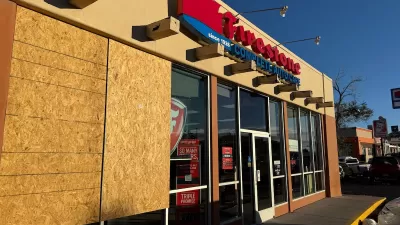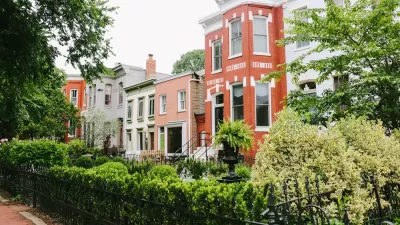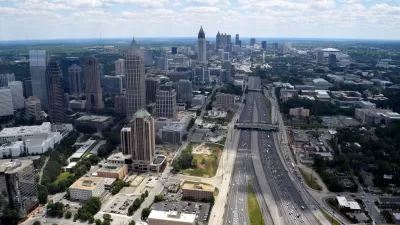A new building by Rem Koolhaas in Beijing is part of a wave of modern construction that is changing the tightly-planned urban fabric of the Chinese capital.
"The city planner Edmund Bacon once described Beijing as "possibly the greatest single work of man on the face of the earth." When he was there, in the nineteen-thirties, you could still see that the city, from the walls surrounding it to the emperor's Forbidden City at its heart, was conceived as a totality-a work of monumental geometry, symmetrical and precise. Even the hutongs, the warrenlike neighborhoods of small courtyard houses set along alleyways, which made up the bulk of the city's urban fabric, were as essential to Beijing as the temples and the imperial compound, which has the same intricate mixture of courtyards and lanes. Bejing was all of a piece.
It couldn't last forever, and it didn't. Mao Zedong tried to change Beijing into an industrial and governmental center, putting up factories and ponderous administrative buildings. But now Mao's Beijing is nearly as much a part of the past as the Forbidden City. The factories are being pushed to the outskirts, and in their place the city has developed a skyline. It isn't like the height-obsessed skyline of Shanghai, or the tight, congested skyline of Hong Kong. In Beijing, the towers are sprinkled all over the place. Most of them are mediocre, and some are ridiculous-a few have pagodalike crowns, to satisfy a former mayor who insisted that new buildings appear Chinese-but a handful are among the most compelling buildings going up anywhere in the world. In Beijing, the latest trend is architecture that will force the world to pay attention, and the result is a striking, unmistakably twenty-first-century city, combining explosive, relentless development with a fondness for the avant-garde."
FULL STORY: Forbidden Cities

Planetizen Federal Action Tracker
A weekly monitor of how Trump’s orders and actions are impacting planners and planning in America.

Chicago’s Ghost Rails
Just beneath the surface of the modern city lie the remnants of its expansive early 20th-century streetcar system.

San Antonio and Austin are Fusing Into one Massive Megaregion
The region spanning the two central Texas cities is growing fast, posing challenges for local infrastructure and water supplies.

Since Zion's Shuttles Went Electric “The Smog is Gone”
Visitors to Zion National Park can enjoy the canyon via the nation’s first fully electric park shuttle system.

Trump Distributing DOT Safety Funds at 1/10 Rate of Biden
Funds for Safe Streets and other transportation safety and equity programs are being held up by administrative reviews and conflicts with the Trump administration’s priorities.

German Cities Subsidize Taxis for Women Amid Wave of Violence
Free or low-cost taxi rides can help women navigate cities more safely, but critics say the programs don't address the root causes of violence against women.
Urban Design for Planners 1: Software Tools
This six-course series explores essential urban design concepts using open source software and equips planners with the tools they need to participate fully in the urban design process.
Planning for Universal Design
Learn the tools for implementing Universal Design in planning regulations.
planning NEXT
Appalachian Highlands Housing Partners
Mpact (founded as Rail~Volution)
City of Camden Redevelopment Agency
City of Astoria
City of Portland
City of Laramie





























